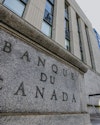The complex issue of inflation has become the talk of the town, as the inflation rate hit 7.7% in May 2022 according to Statistics Canada. We’ve already discussed the topic when the U.S. Federal Reserve was convinced it would be transitory. Now that inflation appears to be persistent, let's take a closer look to better understand our current situation.
What is inflation?
Inflation is the increase in prices over time and is calculated using the Consumer Price Index (CPI). The CPI measures the change in prices over time of a fixed basket of goods and services commonly purchased by consumers. The content of the basket is determined by the Bank of Canada and is updated every 2 to 3 years. An increase in the cost of the basket of goods and services causes money to lose value, as it means that consumers can purchase less with the same amount of money.
Composition of the CPI basket
The CPI basket includes nearly 700 goods and services divided into 8 categories (weights in % as at December 31, 2021)1:
- Shelter (31.02%)
- Transportation (16.44%)
- Food (15.5%)
- Household operations, furnishings and equipment (14.29%)
- Recreation, education and reading (9.35%)
- Health and personal care (4.59%)
- Clothing and footwear (4.4%)
- Alcoholic beverages, tobacco products and recreational cannabis (4.4%)
Why is inflation rising right now?
Economic growth, the unemployment rate, labour shortages, the geopolitical environment and extreme weather events are some of the factors that can increase the cost of living. After the pandemic, supply chain disruptions contributed to the soaring prices. While many initially believed inflation to be transitory, Russia’s invasion of Ukraine and China’s zero-COVID policy caused central banks and investors to change their tune. Inflation has become persistent, and it’s now having lasting consequences on the price of many consumer goods and services, including gas, food and shelter. Rising prices are significantly cutting into people’s budgets and reducing their ability to save.
Is high inflation a new phenomenon?
Many consumers are seeing their purchasing power eroded for the first time by the constant increases to the price of the goods and services they consume. The last time the Canadian Consumer Price Index significantly exceeded the 2% annual inflation target set by the Bank of Canada was in the early 1990s!2

However, we have already faced the challenge of high inflation in the past. For example, inflation fluctuated dramatically in Canada in the 1970s and early 1980s. At the time, Western countries were experiencing higher unemployment rates and an energy crisis that put upward pressure on prices.
Circumstances are completely different today. The unemployment rate is at a historic low3, the accumulated savings are high4 and central banks are better equipped to fight inflation.
How to control inflation
The Bank of Canada’s (BoC) role is to promote the economic and financial welfare of Canada. To do so, the central bank relies on a few tools. The BoC’s monetary policy, which seeks to keep the inflation rate within a 1% to 3% target, is the most important and prominent tool at their disposal to manage inflation.

Bank of Canada tools
Interest rates
- The key way to curb inflation. Raising the key interest rate increases borrowing costs, which slows down the economy and thus lowers inflation.
Quantitative easing/tightening
- The BoC purchases government bonds to inject liquidity into the economy or sells such securities to decrease the amount of liquidity in the economy. Increasing liquidity stimulates inflation.
Communications
- Communicating the comments, analyses, forecasts and meeting notes of the central bank’s governors can influence people’s outlook. For example, the BoC’s forecast about inflation and predicted rate increases can affect investors’ behaviour.
How to manage your portfolio’s inflation risk
Rather than trying to predict inflation itself, a more effective strategy to guard against the negative impacts of inflation is to carefully select sectors and securities that will best perform in an inflationary environment. FÉRIQUE Funds are actively managed, which allows us to change their allocations over time based on the economic situation and the portfolio managers’ outlook. Managers can increase the Funds’ exposure to more inflation-resilient sectors, where companies enjoy price fixing power and are able to pass on cost increases to their customers. Conversely, portfolio managers can also reduce the exposure to sectors most affected by inflation.
Portfolio management at FÉRIQUE Fund Management
Finding high quality securities that can withstand inflationary pressures can be hazardous without advanced expertise, especially since we are more prone to make emotional decisions in times of increased volatility. FÉRIQUE Funds and Portfolios are offered to engineering professionals and their families through FÉRIQUE Investment Services, the principal distributor of FÉRIQUE Funds. The advisors, mutual fund representatives and financial planners5 of FÉRIQUE Investment Services can help you choose diversified investments that align with your investor profile at no additional fee. FÉRIQUE Funds and Portfolios are offered to engineering professionals and their families through FÉRIQUE Investment Services, the principal distributor of FÉRIQUE Funds. The advisors, mutual fund representatives and financial planners of FÉRIQUE Investment Services can help you choose diversified investments that align with your investor profile at no additional fee.



